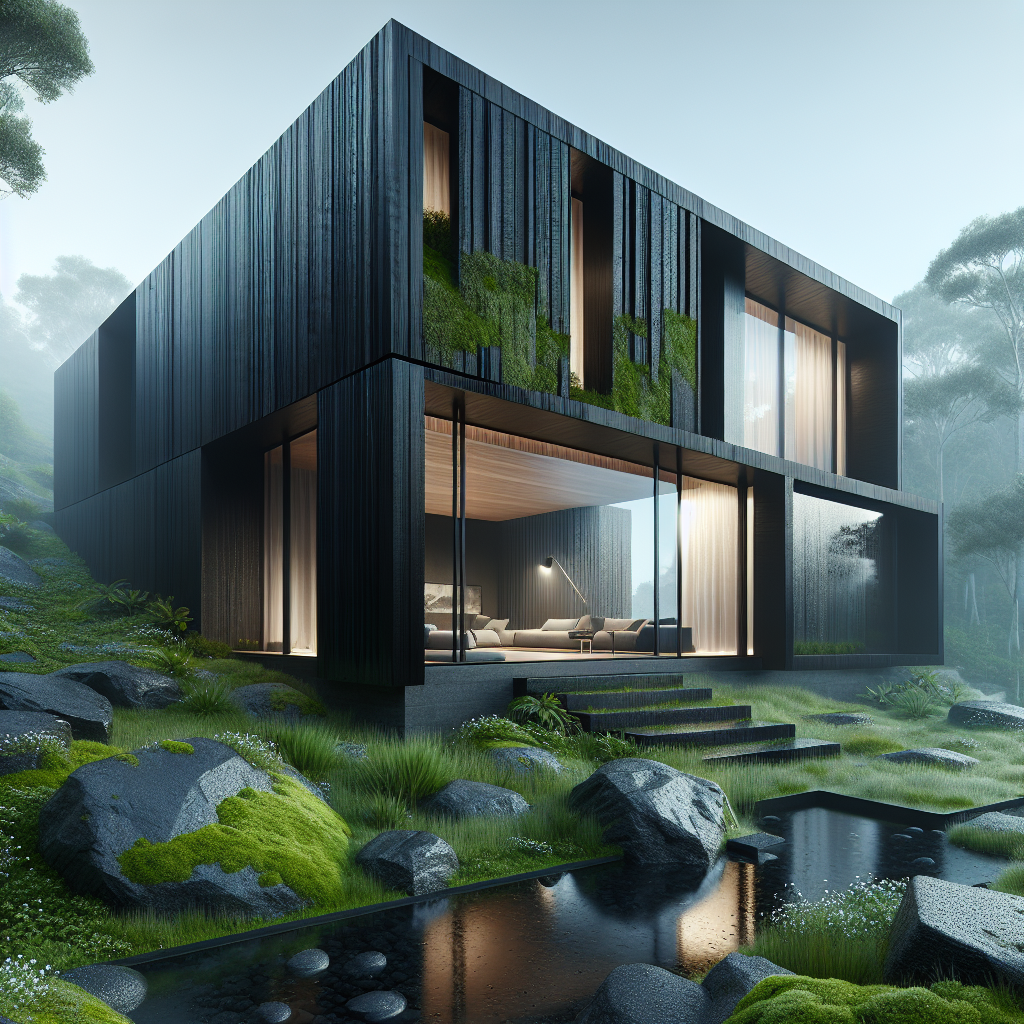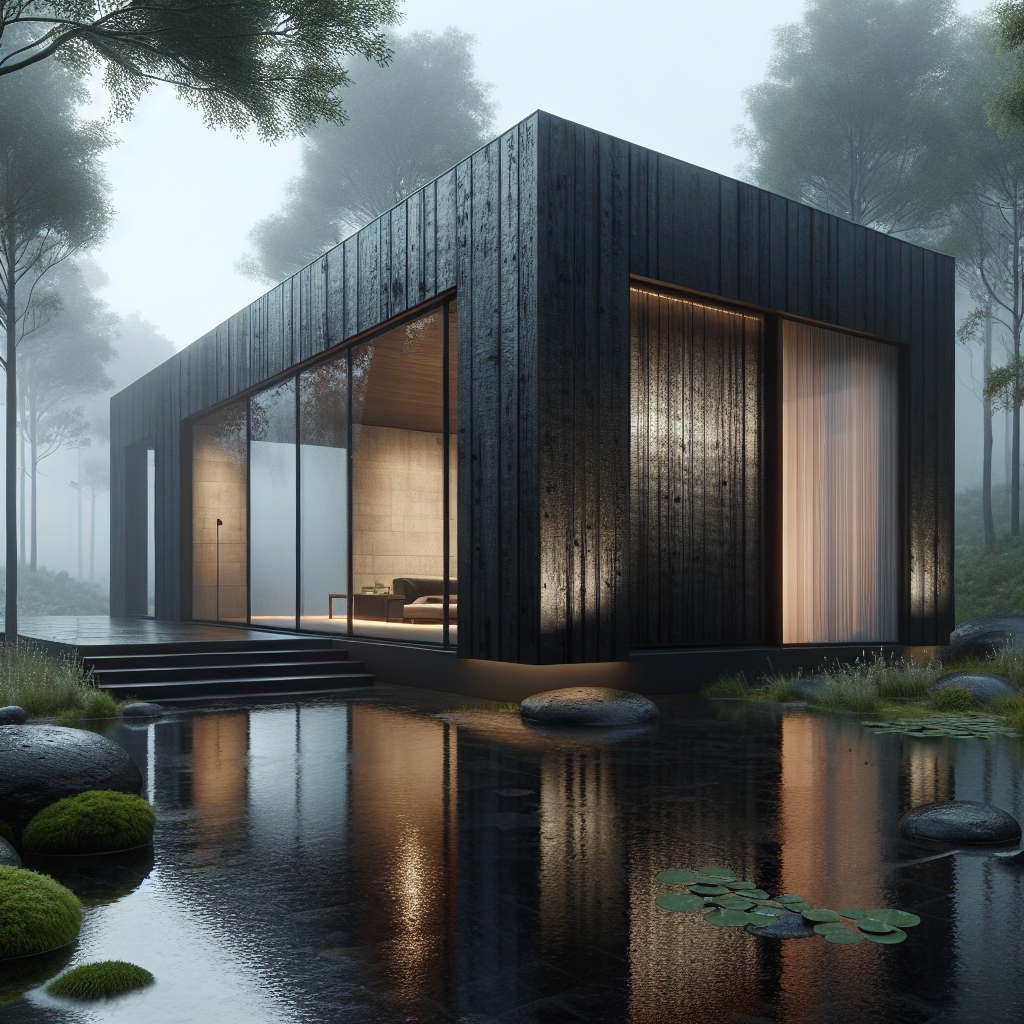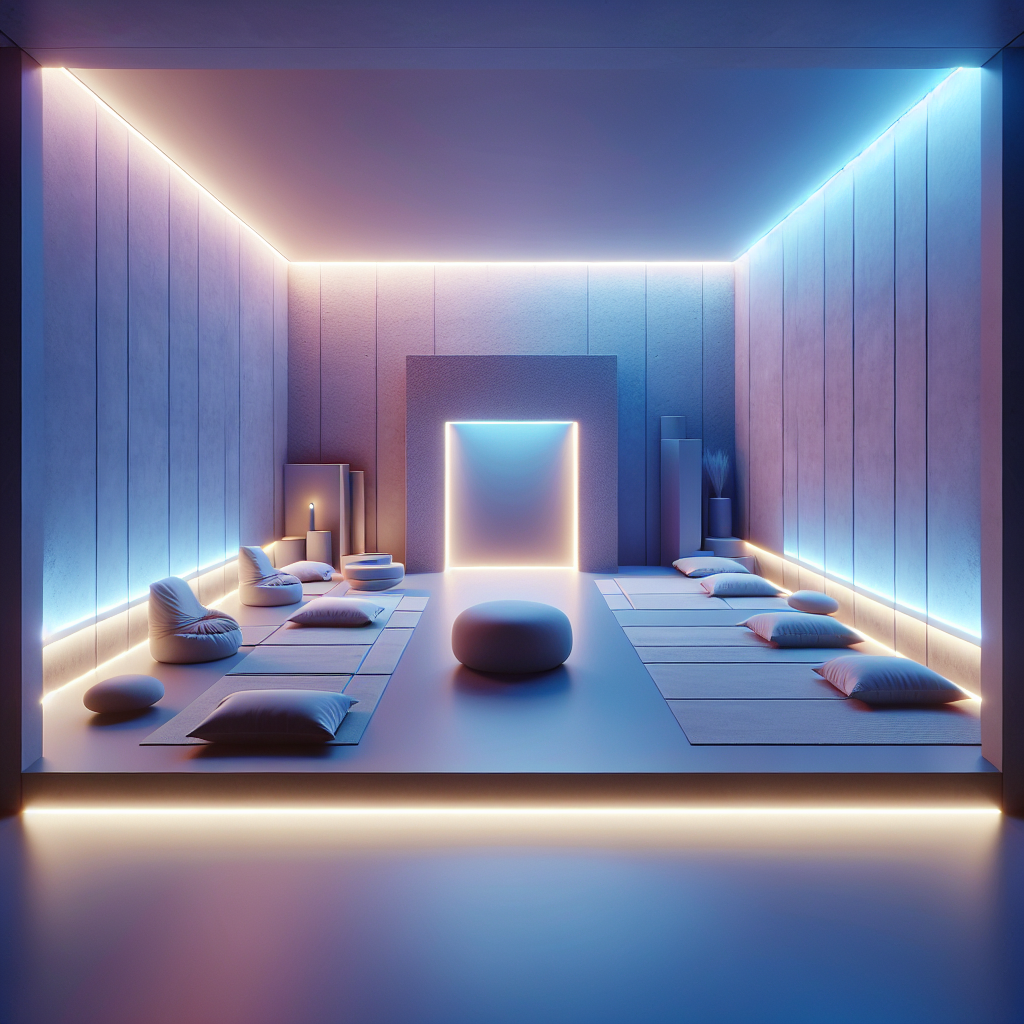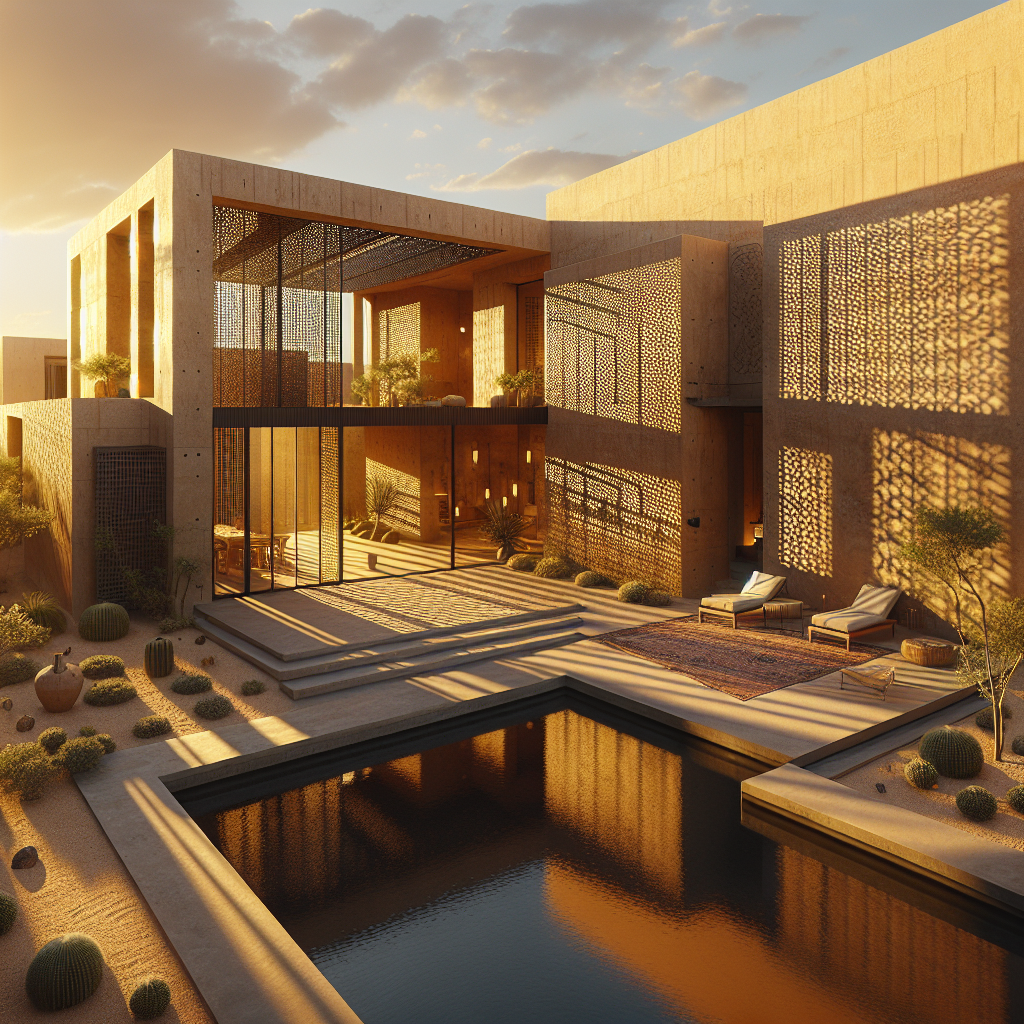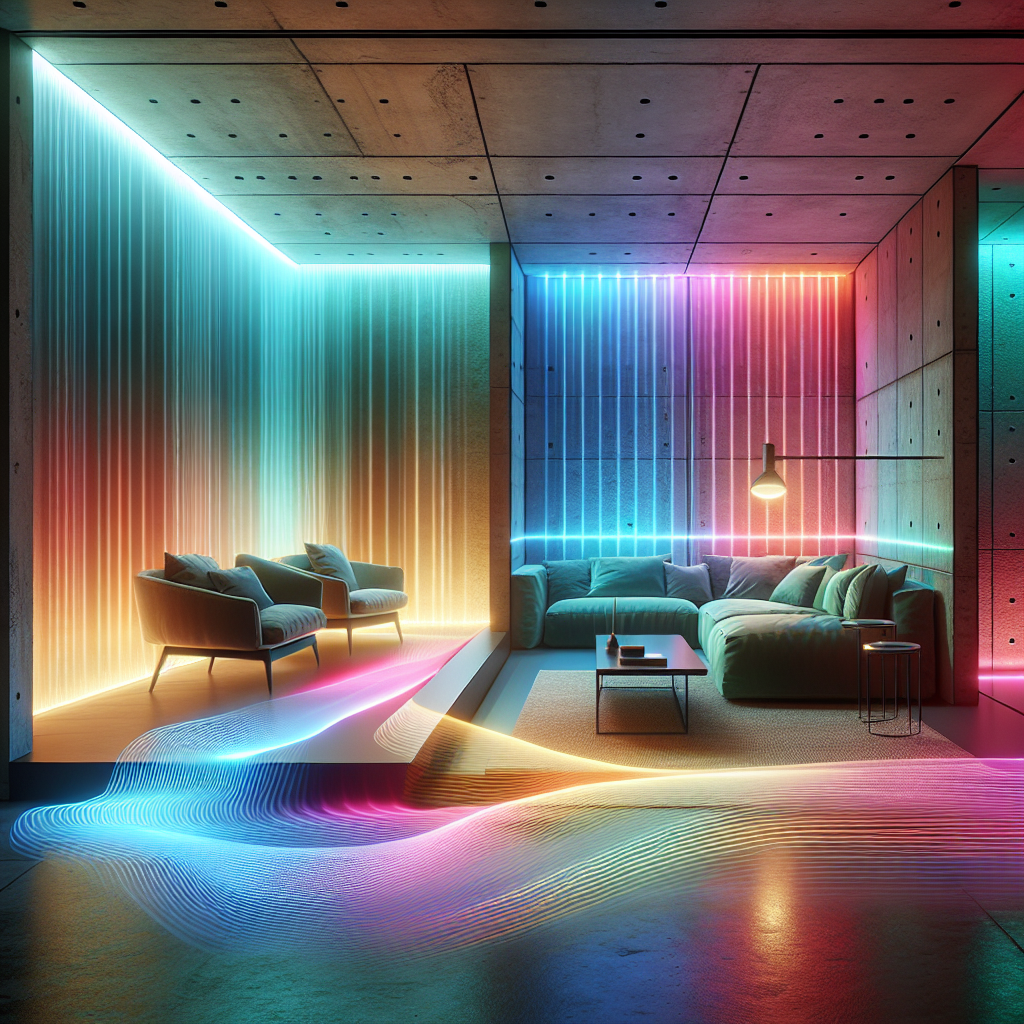The black house: phenomenon exploring dramatic exteriors with charred timber

The Black House: Exploring the Phenomenon of Dramatic Exteriors with Charred Timber
Across the architectural landscape, a quiet yet powerful revolution is taking place—one that redefines the relationship between material, memory, and modernity. The black house, cloaked in charred timber, has emerged as a symbol of restraint and drama, sustainability and sophistication. Its darkened façade, both haunting and poetic, speaks to a new sensibility in contemporary architecture: a fascination with texture, tactility, and the elemental power of fire.
The Origins of Charred Timber: From Tradition to Modern Aesthetic
The roots of this architectural phenomenon trace back to Yakisugi (often called Shou Sugi Ban), a centuries-old Japanese technique of wood preservation. By charring the surface of cedar planks, ancient builders discovered a way to protect wood from rot, insects, and fire itself. The process sealed the timber, rendering it both resilient and visually arresting—a surface that glows with subtle iridescence, oscillating between matte black and silvery graphite depending on the light.
Today, architects across Europe, North America, and Australasia are reinterpreting this ancestral craft through the lens of minimalism and sustainability. The result is a global design language that celebrates imperfection, permanence, and the quiet dignity of natural materials. In an era increasingly dominated by synthetic finishes and digital surfaces, charred timber feels almost radical in its authenticity.
The Allure of Darkness: Why Black Architecture Captivates
There is an undeniable theatricality to the black house. Its exterior absorbs light rather than reflecting it, allowing the building to merge with its surroundings—whether nestled in a forest, perched on a coastal bluff, or standing stark against snow. The effect is both grounding and ethereal, as if the structure has been sculpted from shadow itself.
Architects such as Peter Zumthor, Olson Kundig, and Studio MK27 have explored the expressive potential of dark materials, crafting spaces that evoke introspection and calm. The blackened façade acts as a visual pause in the landscape, drawing attention to form, proportion, and detail. Inside, the contrast between the somber exterior and luminous interiors heightens the sensory experience, creating a dialogue between enclosure and openness, austerity and warmth.
This fascination with darkness also resonates with the wabi-sabi aesthetic—an appreciation for transience, weathering, and the beauty of imperfection. As the charred surface evolves over time, it acquires a patina that tells a story of exposure and endurance, connecting the architecture to the rhythms of nature.
Crafting the Charred Surface: Technique and Innovation
The process of creating charred timber is both artisanal and scientific. Traditionally, planks are bound into triangular tubes and set aflame, allowing the fire to evenly char the surface. Once cooled, the wood is brushed and oiled, revealing a deep, textured finish that can range from smooth satin to cracked, alligator-like patterns. Modern adaptations use controlled torches or industrial kilns to achieve consistent results while maintaining the tactile richness of the original method.
Contemporary manufacturers have refined the process to meet the demands of high-performance architecture. Companies now offer pre-finished cladding systems that combine the visual drama of charred wood with advanced coatings for UV resistance and color stability. These innovations align with the broader movement toward timber as a sustainable building material, emphasizing renewability and low embodied carbon.
In projects like the Black Barn by Rural Design in Scotland or the House in the Woods by Atelier Oslo, charred timber is not merely a surface treatment—it becomes a conceptual anchor. The dark shell frames luminous interiors of pale oak, linen, and glass, underscoring the duality between protection and openness, tradition and modernity.
Sustainability and the Symbolism of Fire
Beyond its aesthetic appeal, the use of charred timber aligns with the growing imperative for sustainable architecture. The charring process eliminates the need for chemical preservatives and paints, reducing environmental impact while extending the material’s lifespan. Moreover, the carbonized layer itself acts as a natural shield, slowing degradation and enhancing fire resistance.
This convergence of craft and ecology reflects a broader shift in architectural thinking—one that prioritizes biodegradable and renewable materials without sacrificing visual sophistication. In a world grappling with climate anxiety, the black house stands as a metaphor for resilience: a structure born from fire, yet enduring against it.
Recent studies from the Architectural Association and other research institutions have highlighted the potential of thermally modified wood to reduce lifecycle emissions by up to 60% compared to conventional cladding systems. As architects seek pathways to net-zero design, charred timber offers both symbolic and practical value—a poetic fusion of ancient wisdom and contemporary sustainability.
Inside the Black House: Light, Texture, and Emotional Resonance
Step inside a black house, and the experience transforms. The darkness of the exterior amplifies the brightness within. Skylights, clerestory windows, and large glazed openings choreograph the movement of daylight, turning interiors into living canvases of shadow and reflection. The play of light on pale stone floors or bleached timber ceilings becomes almost cinematic, a sensory counterpoint to the brooding façade.
Interior designers often complement these spaces with a restrained palette—muted neutrals, natural fibers, and tactile surfaces that echo the honesty of the exterior. The result is an atmosphere of contemplative calm, where materiality takes precedence over ornamentation. This sensibility aligns with the growing appreciation for biophilic design, emphasizing emotional well-being through natural textures and elemental contrasts.
In residential projects, the black house often serves as a retreat—a sanctuary that invites introspection. In public or cultural buildings, the same aesthetic conveys gravitas and permanence, transforming architecture into a vessel for collective memory.
Global Interpretations: From Nordic Minimalism to Pacific Modernism
While the black house has found particular resonance in Nordic and Japanese contexts, its influence is spreading globally. In Iceland and Norway, dark façades blend seamlessly with volcanic landscapes and low winter light. In New Zealand and the Pacific Northwest, charred timber resonates with indigenous traditions of woodcraft and environmental stewardship.
Architectural firms are increasingly experimenting with hybrid applications—combining charred timber with glass, concrete, or corten steel to create layered compositions. This material dialogue recalls the tactile experimentation seen in contemporary architectural trends, where contrast becomes a tool for storytelling.
In urban settings, black houses stand as statements of quiet rebellion against the monotony of neutral façades. They challenge the notion that sustainability must appear rustic or utilitarian, proving instead that ecological responsibility can coexist with bold, sculptural beauty.
The Future of the Black House
As the architectural world continues to grapple with the ethics of material choice and the aesthetics of restraint, the black house remains a compelling case study. It embodies a paradox: born from destruction yet profoundly life-affirming. Its surfaces, though dark, reflect a luminous philosophy—one that honors the past while shaping a more sustainable future.
In the coming years, advances in digital fabrication and material science will likely expand the possibilities of charred timber. Architects may explore adaptive façades that integrate photovoltaic cells beneath carbonized layers, merging energy generation with artisanal craft. Such innovations echo the spirit of net-zero design, where technology and tradition converge to redefine beauty through responsibility.
Ultimately, the black house is more than a trend—it is a meditation on time, transformation, and the enduring dialogue between nature and architecture. In its charred skin lies a story of renewal: proof that from fire, elegance can rise.

